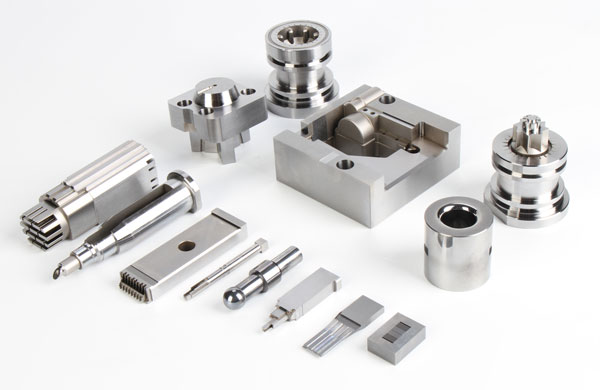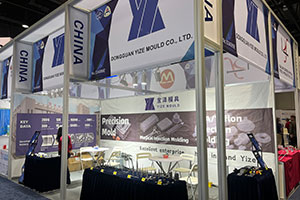The Quality of Tungsten Carbide Parts: The Influence of Molds Cannot Be Ignored
I. Introduction Tungsten carbide, as a high-performance cemented carbide material in modern manufacturing, has shone brightly in fields such as cutting tools, mold manufacturing, and aerospace due to its excellent […]
I. Introduction
Tungsten carbide, as a high-performance cemented carbide material in modern manufacturing, has shone brightly in fields such as cutting tools, mold manufacturing, and aerospace due to its excellent physical and chemical properties, including high hardness, wear resistance, and heat resistance. However, the quality of tungsten carbide parts is not solely determined by the material itself; the design and manufacturing quality of molds also play a crucial role. This article delves into the influence of molds on the quality of tungsten carbide parts, analyzes the reasons behind it, and proposes corresponding solutions.
Our factory business: carbide parts, mold parts, medical injection molds, precision injection molds, teflon PFA injection molding, PFA tube fittings. email: [email protected],whatsapp:+8613302615729.
II. The Core Role of Molds in the Manufacturing of Tungsten Carbide Parts
Molds, as an indispensable tool in the manufacturing process of tungsten carbide parts, directly affect key indicators such as part size accuracy, surface quality, internal structure, and performance, depending on their design and manufacturing quality. Specifically, molds play the following three roles in the manufacturing of tungsten carbide parts:
- Shaping Former: With their specific shapes and structures, molds precisely machine tungsten carbide materials into parts of the required shape and size. The accuracy and surface quality of the mold directly determine the dimensional accuracy and surface finish of the tungsten carbide part.
- Precise Guide: During the machining process, molds provide accurate guidance for machining tools, ensuring the accuracy of the machining path. The guiding accuracy of the mold is a key factor affecting the machining accuracy and surface quality of the tungsten carbide part.
- Solid Supporter: Molds need to withstand tremendous pressure and impact from machining tools and tungsten carbide materials during the machining process. Their strength and stiffness directly determine their supporting capability, which in turn affects the machining quality and stability of the parts.
III. The Profound Influence of Molds on the Quality of Tungsten Carbide Parts
The design and manufacturing quality of molds have a direct and profound impact on the quality of tungsten carbide parts. This is specifically reflected in the following aspects:
- Dimensional Accuracy: The dimensional accuracy of the mold directly determines the size accuracy of the tungsten carbide part. If the mold’s accuracy is insufficient, it will lead to excessive size deviations in the part, making it unable to meet usage requirements.
- Surface Quality: The surface quality of the mold directly affects the surface finish of the tungsten carbide part. Defects or excessive roughness on the mold surface will leave scratches, burrs, and other flaws on the part’s surface, reducing its service life.
- Internal Structure: The structural design of the mold has a decisive impact on the internal structure of the tungsten carbide part. Unreasonable structural design will lead to defects such as stress concentration and cracks inside the part, weakening its strength and toughness.
- Performance Stability: The manufacturing quality of the mold directly affects the performance stability of the tungsten carbide part. If the mold quality is poor, it will cause issues such as deformation and cracking in the part during the machining process, reducing its reliability and service life.

IV. Analysis of Factors Affecting Mold Quality
Mold quality is influenced by various factors, with the main ones including:
- Material Selection: The choice of mold material directly determines its strength, stiffness, wear resistance, and corrosion resistance. Selecting appropriate mold materials is the premise and foundation for ensuring mold quality.
- Design Accuracy: The design accuracy of the mold is key to ensuring its manufacturing quality. Insufficient design accuracy will lead to errors and defects during the manufacturing process, reducing the mold’s performance.
- Manufacturing Process: The manufacturing process of molds includes multiple steps such as machining, heat treatment, and assembly. The rationality and precision of the manufacturing process directly affect the mold’s manufacturing quality and service life.
- Quality Control: Strict quality control measures are important means of ensuring mold quality. Through comprehensive quality control, issues during the manufacturing process can be identified and corrected in a timely manner, improving the mold’s manufacturing quality.
V. Effective Measures to Improve Mold Quality
To improve mold quality and ensure the stable and reliable quality of tungsten carbide parts, the following effective measures can be taken:
- Select High-Quality Materials: Based on the usage requirements and machining conditions of tungsten carbide parts, select appropriate mold materials to ensure they have sufficient strength, stiffness, wear resistance, and corrosion resistance.
- Improve Design Accuracy: Strengthen the accuracy control during the mold design process to ensure the accuracy and completeness of the design drawings. At the same time, adopt advanced design software and tools to improve design efficiency and accuracy.
- Optimize the Manufacturing Process: Tailor the manufacturing process of molds to the machining characteristics and requirements of tungsten carbide parts. Adopt advanced machining equipment and technologies to improve the machining accuracy and surface quality of molds. At the same time, strengthen quality control in heat treatment, assembly, and other steps to ensure the overall performance of the mold.
- Strengthen Quality Control: Establish a comprehensive mold quality control system, including raw material inspection, machining process monitoring, and finished product inspection. Through strict quality control measures, ensure that the manufacturing quality of the mold meets usage standards.
- Continuous Innovation and Improvement: Encourage mold manufacturing enterprises to strengthen technological innovation and research and development, continuously improving the design and manufacturing level of molds. At the same time, pay attention to industry development trends and changes in market demand, timely adjust product structure and production strategies, and enhance market competitiveness.
VI. Conclusion
In summary, the quality of tungsten carbide parts is directly influenced by molds. The design and manufacturing quality of molds have a significant impact on the dimensional accuracy, surface quality, internal structure, and performance stability of tungsten carbide parts. Therefore, in the manufacturing process of tungsten carbide parts, great attention must be paid to the design and manufacturing quality of molds, and effective measures should be taken to improve mold quality, ensuring the stable and reliable quality of tungsten carbide parts.







